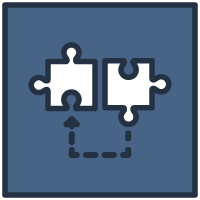OHOA Module: Routines for Participation and Learning

Learning Outcomes
- Describe routines as a foundation for early learning, concept development, and interactions.
- Describe how routines support and organize learning for students who are deaf-blind by compensating for sensory gaps.
- Explain the importance of collaboration with family members and the use of routines in both home and school environments.
- Identify how routines support the student, the intervener, the teacher, and the family.
- Identify how routines are a framework for assessment and intervention.
- Describe the intervener’s role in the development of routines.
- List the prerequisites and considerations for designing and using routines.
- Identify the steps for reviewing routine materials with a student and the process for developing a dialogue for communication.
- Create and evaluate an effective routine for a case-study student.
- Describe ways to expand on routines to help a student make progress.
- Summarize the importance of routines for learning all types of skills.
Development Team
- Michelle Clyne, Amy Parker (Leads)
- Robbie Blaha
- Johanna Borg
- Vivecca Hartman
- Barbara Martin
Use of this Module
This module is available for free on our website. We invite anyone to use these materials. Please note that NCDB does not provide CEUs, certificates, or confirmation of completion.
Suggested Citation
Clyne, M., Parker, A., Blaha, R., Borg, J., Hartman, V., Martin, B. (2015, September). Routines for assessment and learning. In National Center on Deaf-Blindness, Open Hands, Open Access: Deaf-Blind Intervener Learning Modules Monmouth, OR: National Center on Deaf-Blindness, The Research Institute at Western Oregon University.
